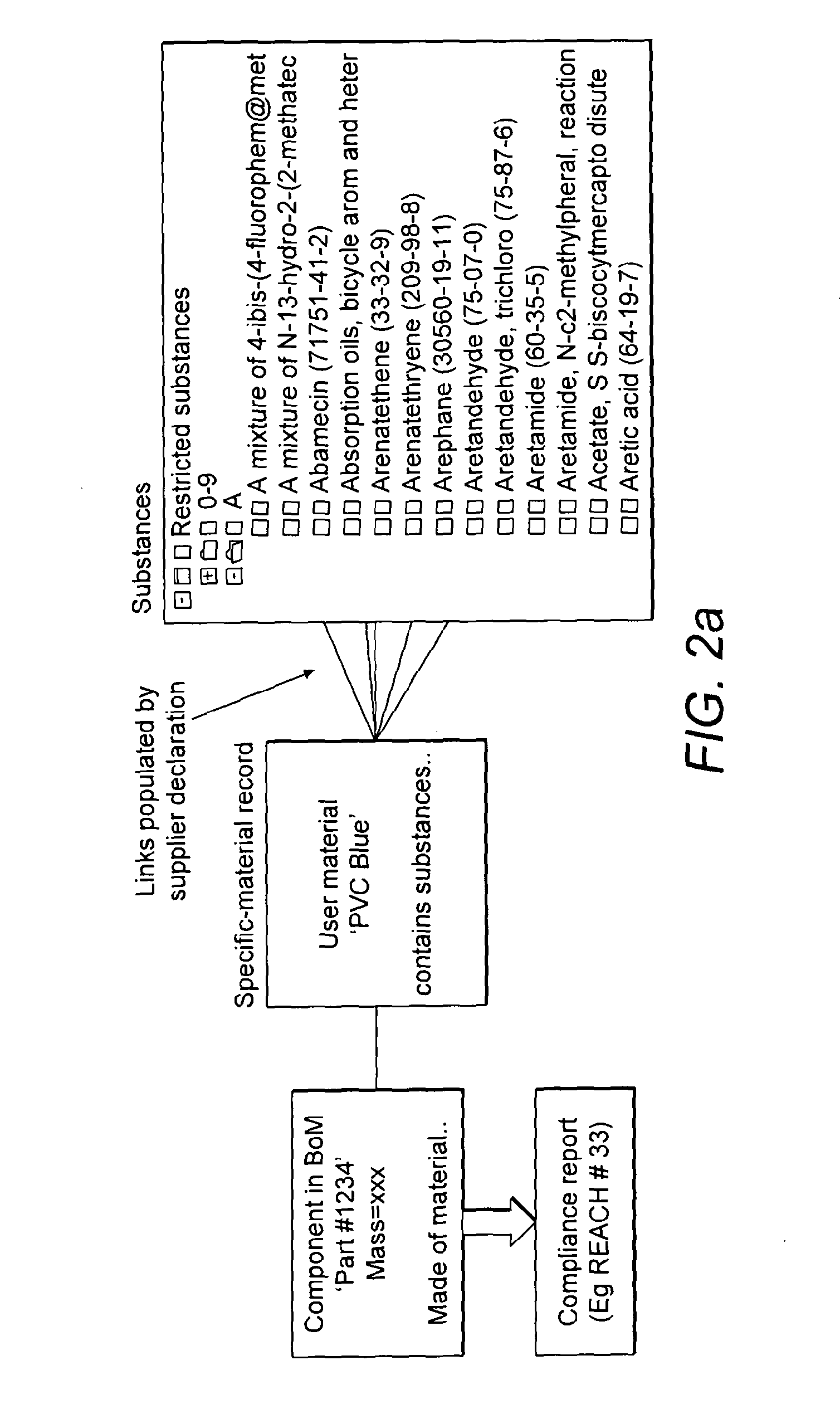System for and method of estimating the chemical composition of an article
a technology of chemical composition and system, applied in the field of system and method of estimating the chemical composition of an article, can solve the problems of missing actors in the supply chain, difficult to track back through the various tiers of supply chain to determine the composition of articles, and complex global manufacturing supply chain, so as to avoid system failure
- Summary
- Abstract
- Description
- Claims
- Application Information
AI Technical Summary
Benefits of technology
Problems solved by technology
Method used
Image
Examples
Embodiment Construction
[0043]FIG. 1 shows components of a system 100 for indicating the presence of a substance in an article according to the present invention. The system 100 comprises a processor 1 connected to a user interface 2. The connection may be wired or wireless and the user interface 2 may be a personal computer, tablet or smart phone, for example. The processor 1 is coupled to a component data unit 3 which may store information on materials making up a component or sub-assembly.
[0044]The processor 1 is also coupled to a substance data unit 4 which stores any available substance data such as declaration for an article which may be obtained from a supplier, for example, or other data source. The materials or component records in the component data unit 3 may be associated with substance data such as declaration data if this is available in the substance record or data unit 4.
[0045]The processor 1 is further coupled with a generic material record unit 5 which stores generic material records. The...
PUM
 Login to View More
Login to View More Abstract
Description
Claims
Application Information
 Login to View More
Login to View More - R&D
- Intellectual Property
- Life Sciences
- Materials
- Tech Scout
- Unparalleled Data Quality
- Higher Quality Content
- 60% Fewer Hallucinations
Browse by: Latest US Patents, China's latest patents, Technical Efficacy Thesaurus, Application Domain, Technology Topic, Popular Technical Reports.
© 2025 PatSnap. All rights reserved.Legal|Privacy policy|Modern Slavery Act Transparency Statement|Sitemap|About US| Contact US: help@patsnap.com



